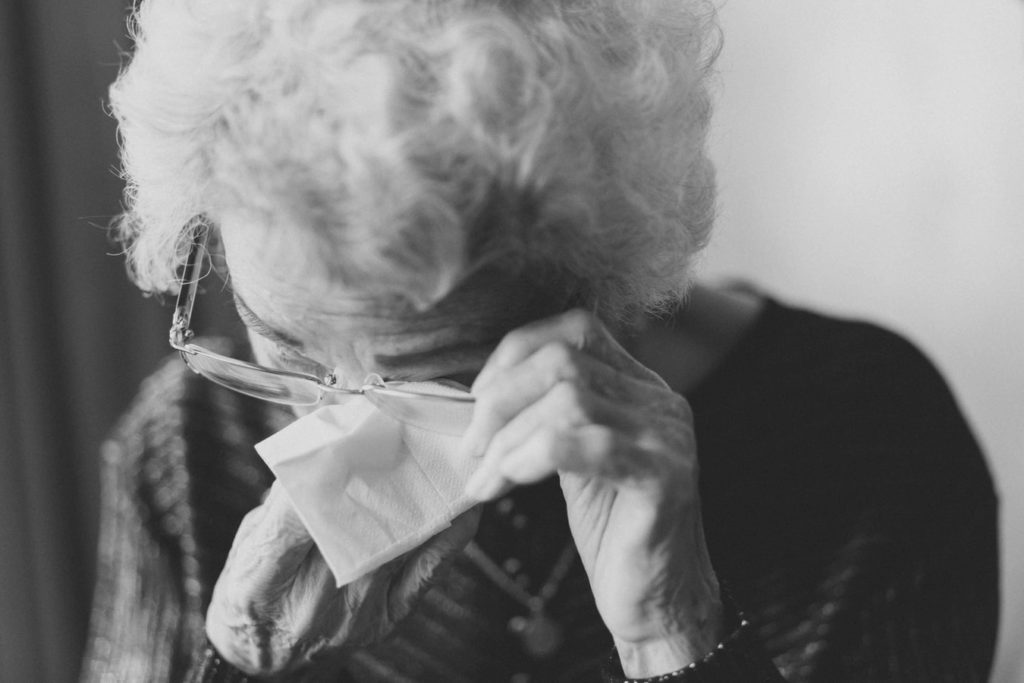Hospice care can be a challenging experience as families of terminally ill patients watch as their loved ones spend their last days. To help these families, registered nurse and author Barbara Karnes offers an insightful look at that experience in her book Gone From My Sight: The Dying Experience. Here, she explores the various stages that patients go through as they wait out their final days. The author also offers a detailed look at what caregivers can do to give their wards an effective end of life care.

The Stages Of Death
Karnes opens her book with a succinct description of the dying process. Here, she lists down the different stages that a person goes through as they approach their final moments. She also goes through the various physical and psychological symptoms during each stage.
Last Three Months
During the last three months of life, patients start taking less food and water. They also increase their sleeping hours. This is due to their body activities starting to slow down. They become more withdrawn from their surroundings and people.
Last Two Weeks
The decrease in vital signs continues to accelerate during the last few weeks of life. The patient’s skin also starts to change to a pale bluish color as the blood circulation and respiration becomes irregular. Psychologically, the patient starts experiencing significant confusion and agitation. They may also talk with unseen people.
Days Or Hours Before Death
Symptoms from the last two weeks intensify further. Patients’ eyes also become glassy, tearing, and are now half-open. Interestingly, they might have a sudden burst of energy but their vital signs further dwindle. They might also stop breathing altogether for a few seconds before resuming.
Minutes Before Death
In the last minutes before death, the patient might experience “fish out of water” breathing. This is when they start gasping for air. Eventually, they get into a long sleeplike state from where they cannot be awakened. Doctors check the last time for vital signs before declaring the time of death.
Helping Patients As They Approach Death
Karnes notes that, while these symptoms are general ones, each patient uniquely experiences death. She also explains that not all the symptoms might appear in a dying patient. Additionally, the moment of the patient’s “separation” from their bodies might take months or it might take just minutes.
As such, she says that those providing hospice care or at-home caregivers need to approach each situation uniquely. She says that it will help them better manage the symptoms and care for the patient as their time approaches. Lastly, she reminds readers that end of life care providers should be flexible in dealing with each patient.
Dealing With The Signs During The Last Few Months
As noted above, one of the more noticeable signs of imminent death within a few months is when the patient starts withdrawing from the outside world. Here, they start to realize that “yes, I am dying.” They first lose interest in doing things that they might like before, such as reading the newspapers.
Soon, they also start withdrawing from the immediate people around them. For instance, they might tell you that they don’t want company on certain days. They also start detaching themselves from even their loved ones. Karnes explains that this is the time that they begin going inside of themselves and evaluating their lives
According to her, this introspection is often done with the eyes closed. As such, the patient ends up sleeping longer than they usually do. They might also add a morning nap to their usual afternoon naps.
Because of these extended periods of sleep, Karnes says that end-of-life care patients communicate less. They find it harder to say things through words. Here, Karnes says that touch becomes more important in conveying what you want to say to them. As such, you would want to massage their hands and head after speaking for them to feel you. Additionally, have a short moment of silence after speaking to give them time to absorb what you just have said.
Dealing With Decreased Food Intake
Another significant external change as end-of-life patients near their time is them eating less and less. Karnes says that the patient’s family might find it hard to come to terms with. After all, food is essential for living. As such, refusing to eat is like hastening the dying process.
But she argues that this is a normal part of the process. As the body gradually shuts down, there is no need to provide it with energy. Instead, she says that the body needs spiritual “energy” more to sustain itself from here on.
Here, it would be best for end of life care givers to simply follow the patient’s wish to not eat. If they do request something to eat, give them something easy to digest. Liquid foods are more preferable for them at this point. Do not try to encourage them to eat more if they take only a few small bites.
Dealing With The Signs Within Two Weeks Before Death
As the weeks before death become shorter, the patient will become more confused and agitated. They might talk to people who are not there or about events that you might not be aware of. Patients might also frequently converse with relatives who have already died.
While this will be a distressing sight, caregivers must be ready to stay by the patient’s side during these episodes. Even though they can’t hear you clearly, you can assure them that what they are seeing is real. This will help them calm down and be less agitated.
Responding To The Final Few Days And Hours.
As the patient approaches their remaining days and hours, they might have a sudden burst of energy. They start talking clearly again as if there was no disorientation. The patient might also request a favorite food even though they have not eaten for days.
At this point, Karnes says that you need to see it as a final farewell. As such, family members need to be there to bid them goodbye. You might also want to share with them fond memories. This will help them move on.

Get The Best Hospice Care During Your Loved One’s Final Moments
Karnes closed her book by saying that death shouldn’t be seen as an end but a beginning. A beginning of a new life in a new city. And you would want to prepare your loved ones for that journey by providing them the best hospice care possible. Sign up with us today and we will be by your side to send them off on that journey.
